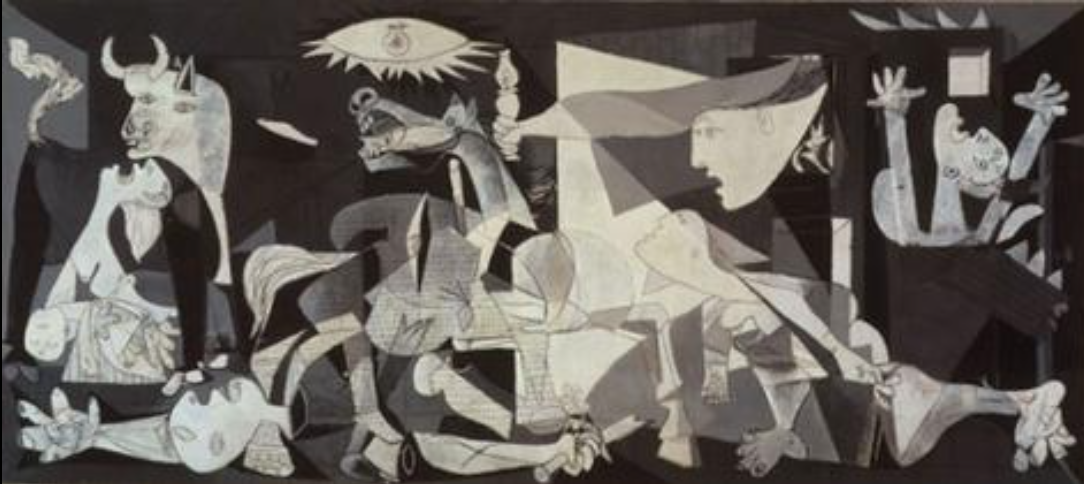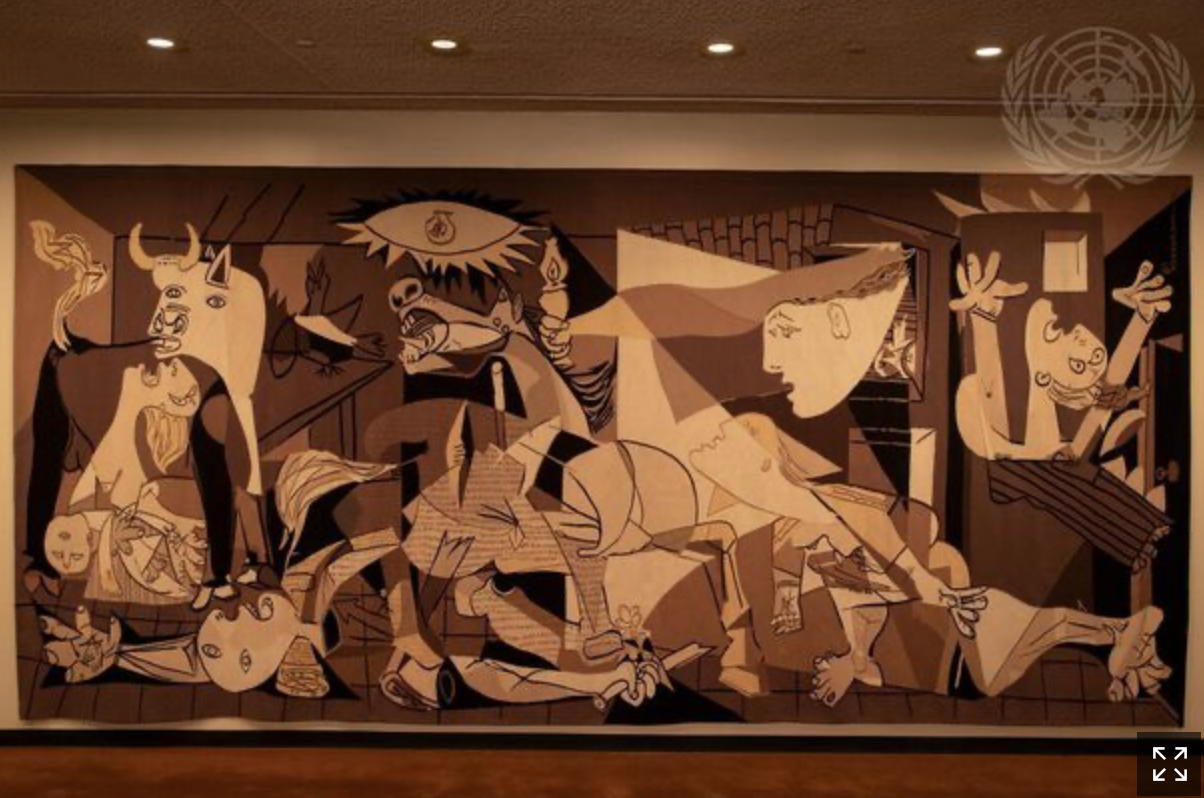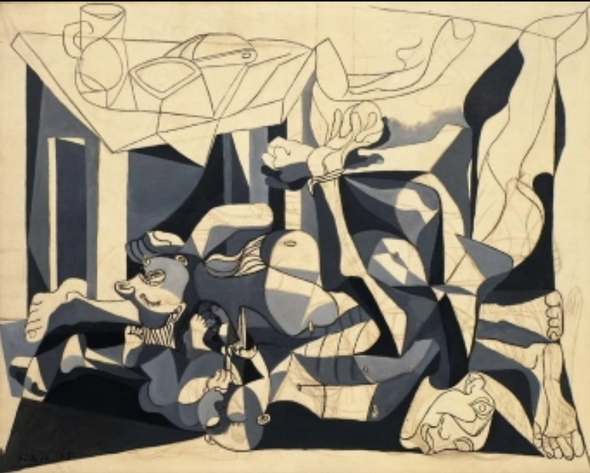War in the Painting Pablo Picasso, the great painter of the 20th century and the founder of Cubism, painted his work as political statements in three of his works. Picasso was affected a war throughout his entire life and his expierence from childhood to the death at the time had a direct impact on his artworks. When the Spanish Civil War broke out, he would like to express his political statement about the peace, which led to his painting of Guernica in 1937. In fact, Picasso did not train or serve as a soldier, he would use his artwork to make as a political weapon. He claimed that his artwork was a "journal" that documented not only his personal life, but also the documentary of the war. During World War II, Picasso lived in occupied Paris. When France was liberated from the Nazis, he became committed to using his art for political statements. His post-war art therefore displays anti-war images and symbols of peace. No, painting is not done to decorate apartments. It is an instrument of war for attack and defense against the enemy. - Pablo Picasso His major three political painting as a anti-war and peace statement are the Guernica (1937) , The Charnel House (1944–45) and Massacre in Korea(1951). 1. Guernica (1937) It is one of his best-known works, regarded by many art critics as the most moving and powerful anti-war painting in history. Guernica is a work depicting the horrors of the 1937 Spanish Civil War, when Nazi forces bombed the town of Guernica, killing about 2,000 civilians. The original, which is owned by the Reina Sofia National Museum in Madrid, is an oil painting on a 3.5 x 7.8 m canvas. It was re-produced in a tapestry version in 1955 at the request of the Rockefeller family, who built great wealth and power through the oil business in the United States in the 19th century. The tapestry version is currently hanging on the wall of the UN Secretariat, delivering a message about war and peace. This painting hung in Picasso's apartment. At the time, Picasso was living in Paris, France, under Nazi occupation during World War II. When a Nazi officer who visited his apartment asked, "Did you paint this picture?" Picasso said, "No, you made it." It was produced like a black-and-white war documentary film, expressing the pain and suffering caused by the violence and chaos caused by war. The horses, bulls, women, babies, soldiers, and flames in this picture flow as if blood were flowing even though they were not represented by the color of red. Reference: Tom Lubbock (27 March 2013). "Review: Guernica by Gijs van Hensbergen | Books". The Guardian. Retrieved 20 April 2013. 2. The Charnel house (1944-45) It is considered to be Picasso's second major anti-war painting, the first being the monumental Guernica (1937), although it is smaller than its predecessor and unfinished. The painting is housed in the Museum of Modern Art in New York City. Piccaso was an apolitical artist, and after Spanish Civil War, he announced his political statement by artworks with great concerns. In 1945, Picasso asserted his political role as an artist. The Chanel house was inspired by a documentary about a Spanish Republican family who were killed in their kitchen. It were painted in a predominantly blue-grey color, indicating that the war at that time was dull and meaningless. He removes all the colors in this painting to emphasize the image, and even the top image is unpainted, leaving only a sketch. That is why, looking at this painting, you can feel the emptiness, helplessness, and ruins of war. 3. Massacre in Korea ( 1951) It is Picasso's third anti-war painting and depicts a scene of a massacre of a group of naked women and children by a firing squad. It is influenced by Francisco Goya's painting "The Third of May 1808". So, comparing the two paintings, the composition and expression are similar to each other under the theme of the horrors of war, as if going back and forth between the past and the present. In January 1951, six months after the outbreak of the Korean War, Picasso completed The Massacre in Korea. Most of the people who are threatened and die of abuse are women and children. Those who point their guns at unarmed civilians are professional soldiers. They are dressed in strange armor and wielding weapons. Picasso shows through this painting the horrors of war and that there is no justification for any war. Because war always makes innocent victims like in the Ukraine.
0 Comments
Leave a Reply. |
Myungja Anna KohArtist Categories
All
Archives
July 2024
|
Proudly powered by Weebly





 RSS Feed
RSS Feed